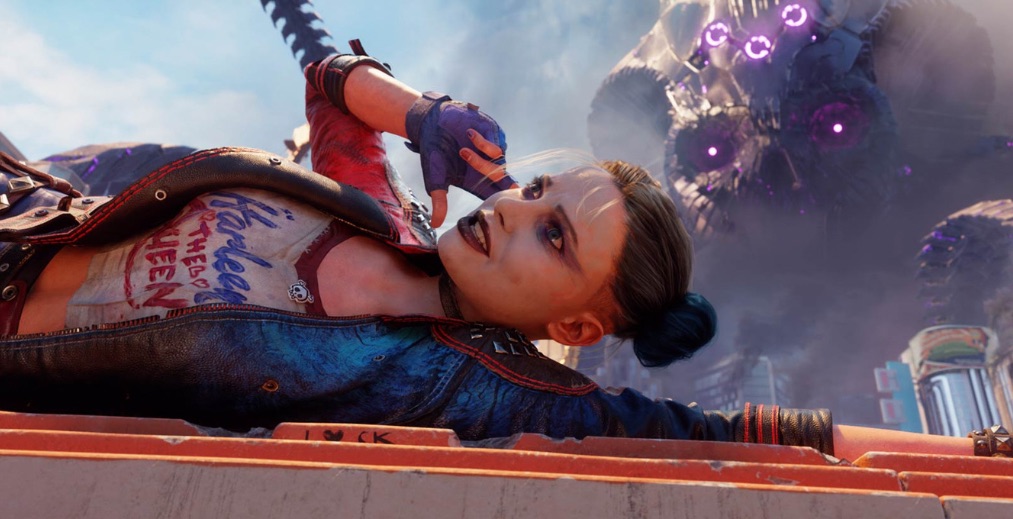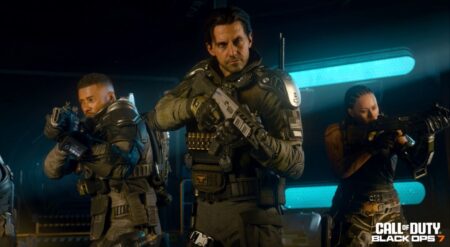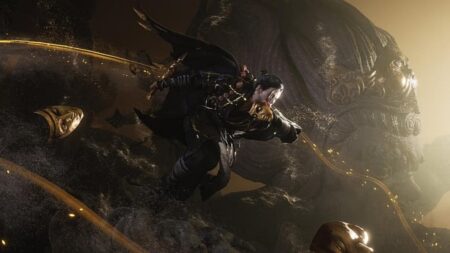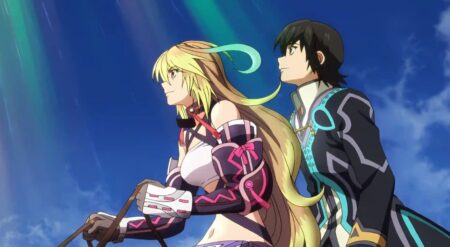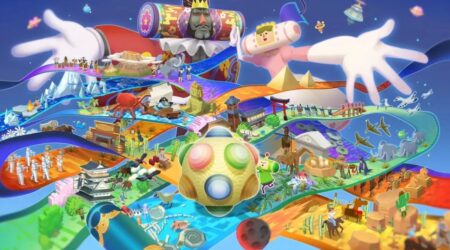2009 redefined what a superhero game could be with Rocksteady’s Batman: Arkham Asylum. They delivered a more personal story surrounding the dark knight taking us into his psyche. All while he takes on a night of nightmares in Arkham Asylum, Arkham City, and Gotham. Now, 15 years later, we get the next evolution of that story with Suicide Squad: Kill The Justice League, an action-adventure shooter. Instead of helping Metropolis as the heroes, we do it as four oddball villains. With a game coming from a studio that has shown that they get how to make endearing superhero games while bringing fun twists to classic villains, it’s odd to see them deliver a soulless game such as this.
Suicide Squad: Kill The Justice League takes place within Rocksteady’s Arkham-verse five years after Batman triggered the Knightfall protocol and faked his death. Amanda Waller, leader of A.R.G.U.S. enlists four unlikely villains to help her on a mysterious suicide mission within Metropolis. Harley Quinn, Captain Boomerang, Deadshot, and King Shark, with little to go on, quickly learn that Metropolis and the world are in danger. It’s being overrun by four of the strongest superheroes to ever exist all under the control of Brainiac. Under Waller’s orders, they have one goal. Kill the Justice League and put a stop to Brainiac before he takes over the planet… while not killing each other in the process.
Suicide Squad: Kill The Justice League’s strength comes from its writing. Harley Quinn, King Shark, Boomerang, and Deadshot are all great. They’re funny and they all go through some sort of growth that people with a lack of morals can go through, never acting like heroes. In other words, they stick to their core and sources. The ending Suicide Squad members aren’t taking up the new Justice League mantel. They just have new views on life. Their growth as people works well in parallel with seeing just how far the world’s greatest heroes have fallen.
What works even better with the story is how tied each villain is to a Justice League counterpart. Harley learns more about being a leader by going against Batman. Deadshot comes to terms with his past while fighting Green Lantern. Captain Boomerang proves himself as not a D-list villain as he singles out The Flash. And King Shark shows he’s more than a misunderstood creature in human society, mirroring Superman’s journey.
Both are two sides of the same coin. Just like how each murder of a hero is a reminder that sometimes you can’t save everyone, the villain’s growth is a lesson in redemption and that becoming a better person does not mean they are good. They are just better versions of themselves.

As for the connections to the Arkham-verse, every story thread for why characters you thought were gone forever are returning actually make sense. Like Poison Ivy, for example. In Arkham Knight, she definitively died while helping Batman stop the Scarecrow’s fear toxin from spreading. So how is she alive, and more importantly a child, in Suicide Squad? Thank Lex Luthor for that. Because of Lex’s experimentation, Ivy is back and is an unhinged child who occasionally helps you out. Same for the other instances, like Batman returning. Not all of them are spelled out for you, but if you look closely enough, you will find those reasons for their return.
But the writing can only carry so much. Gameplay is, for the most part, enjoyable. Landing one shots feels satisfying, especially with the higher-level weapons you get later on. Every charged ability, like traversal attacks or suicide attacks, is always visceral. Plus, every aspect of combat feels unique to whichever character you’re playing. Deadshot plays widely differently than King Shark. And that’s thanks in part to several key distinctions, traversal mechanics, how their traversal attacks trigger, and the weapon restrictions each character has.
Overall, there are six weapon types: heavy weapons, pistols, SMGs, snipers, shotguns, and assault rifles. Each character can equip about three to four of those types while being locked out of the others. You don’t have a choice as to which weapons they can’t use and can only equip two weapons at a time. As a way to make each character feel distinct, what an odd decision. There’s no real rhyme or reason besides maybe what guns the character prefers? But that’s never defined or explained. You’re just told that character can’t equip that weapon when looking at the menus.
Yet the negative of the guns and character customization overall is just how many stats and pieces of information are just thrown at you. Your whole screen is filled with stat changes, bonuses, afflictions, ratings, bundles, the list goes on. It’s too much information.
There’s no easing into the sheer amount of information you’re taking in. In a way, it’s like the game wants you to experiment on your own as to what feels good to you. How can you do that if you don’t know what most of the information means? And this is on every single equippable item. Thank goodness the game will just tell you if a new item is, in summary, stronger or weaker than what you already have. But these walls of text aren’t restrictive to just equipable items.
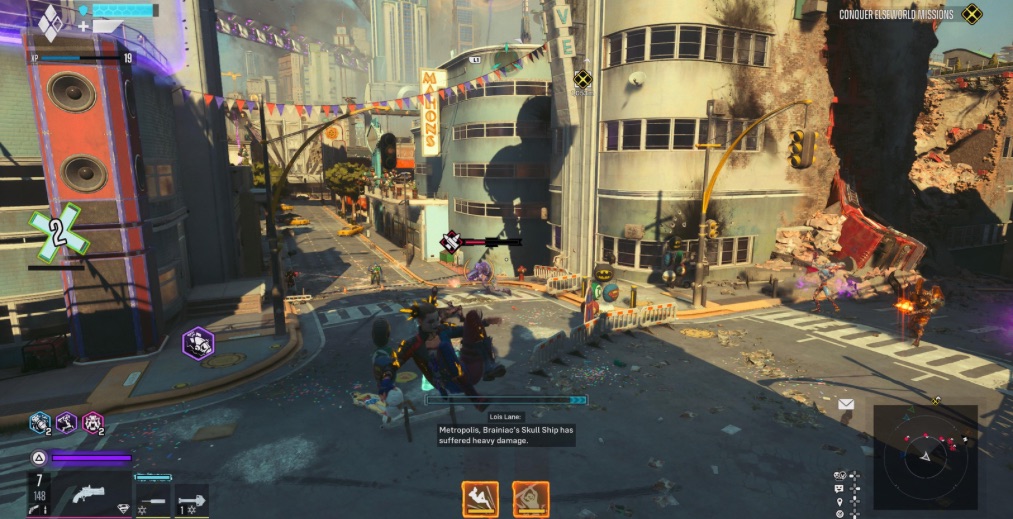
Every character has a unique talent tree, and by the time they reach level 30, they have 30 total talents to choose from. Reminiscent of the weapons, though, every talent you can select is just a wall of text as to what it’ll change. They’re just so exact with what they’ll do, too. Here’s an example of just how complex talents can be. Mind you, this is a talent that you can choose at level 3 with Harley.
Every 10 combo increases firearm damage by 20% while airborne and performing a Grapple Attack Traversal Attack generates 2 combo.” That’s a lot of descriptors for one single talent. On top of all that, the talent gives a recommended playstyle for what how that talent will play best with. There’s just no definition for what that playstyle is.
Min-maxers may love the sheer amount of information to understand. Yet as a member of the general playerbase, it’s all a deterrent to care. I was always equipping items that was just overall stronger, finding out the bonuses later, and talents that were simple to understand. When in the heat of combat, though, a lot of the overwhelming aspects just fade away. Running around, jumping on top of buildings, causing explosions and executing enemies is exhilarating. Even with a lot of information on screen, it all kind of fades away because the controls themselves just make sense.
Yet the missions themselves are blander than you could imagine. What’s worse is they repeat. And they repeat frequently. Grand story moments boil down to something that was a simple mission before, like defending a vehicle, or killing enemies to get enough tokens to expose a weak point. There’s about 5-6 types of missions that you’ll experience and that’s really about it. Additional enemy types are introduced throughout the game to spice things up, but only one actually gets an introduction. All the others just get a pop-up screen after finishing a mission warning you what’s out in Metropolis now.
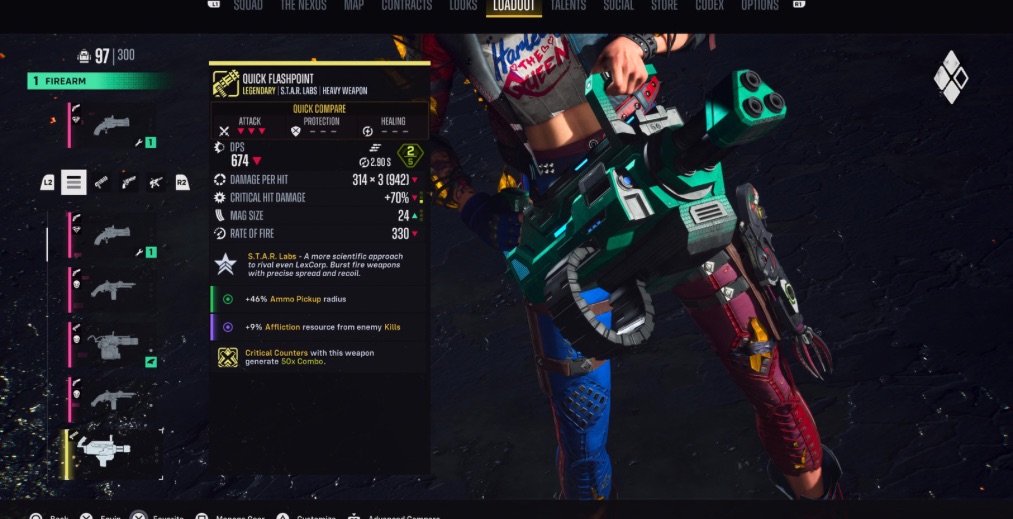
Unlike the weapons, the enemies are much more show than tell. You’ll run into those new enemies, and you’ll have to learn how exactly to beat them. Like the sniper who warps away if you get too close, or the brute that takes a lot of extra hits to take down. But for the most part, you need to be paying close attention to even notice you’re taking down a new enemy type, and that’s because they all look so freaking similar.
Suicide Squad’s biggest weakness is its lack of variety. Those 5-6 types of missions are repackaged with not even shinier coats of paint for bigger story moments. And you’ll be fighting the same blue aliens you’ve been fighting since stepping foot in Metropolis. The only changes are the cutscenes that follow before and after and the voice lines being spoken mid-scenario.
This leads to the boss fights. For a game whose tagline is Kill The Justice League, you’d think fighting the Justice League would actually be grand moments. For the most part, they are. These fights are wildly different than anything you’ve done up to that point in the game. That novelty wears off fast. Out of the five major boss fights, only one stands out, and that’s the Flash, who’s the first one you fight. All the others are different, but the fights as a whole are boring by the time that member dies. They’ll end up doing the same mechanics over and over again but just faster, or with more versions of that mechanic, even with distinct phase changes.
The most abhorrent fights are Batman and the final boss fight. For Batman, you don’t actually fight Batman. You fight a fear toxin-induced version of Batman. The Arkham-verse had great fear toxin induced boss fights. Not here. You’re just shooting a gigantic Batman that does wave attacks, shoots laser beams, and throws giant orbs at you. What part of that screams Batman? And the final fight? Without spoilers, the Brainiac fight let me down more than I could ever imagine. It genuinely soured a game that was already teetering on the edge of being good.

But I’m not sure what is a bigger harm to Suicide Squad, the interesting send-offs to this universe’s heroes after boring fights, or how it handles the rewards and post-game. Just the sheer amount of currency you earn is shockingly absurd. There are six different currencies to earn to modify guns, upgrade equipment, modify equipment, etc. and there’s no rhyme or reason for how you earn them. You’ll get a healthy amount of every one of them from just doing stuff around the map. And the purchasing themselves is almost insulting to The Penguin, Poison Ivy, and Toyman who appear after fun introductions as basic vendors to talk to within the Hall of Justice.
Finally, let’s talk about the map. Metropolis is massive and is beautifully rendered. But it doesn’t distinguish itself in any way. For a large city, you’d expect different boroughs that have their own character. But for the most part, just about everything looks the same except for being taller or having one to two landmarks that play into Riddler challenges. In other words, Metropolis deserves better than being a basic city with some toys and easter eggs scattered throughout it.
Regardless of your feelings about the Justice League, you can have fun in Suicide Squad: Kill The Justice League. Rocksteady did well with creating a story that can hit the heartstrings. Playing as each member of the squad brings their own unique forms of entertainment, where you’ll enjoy switching between each member as needed. But the writing and character growth can only do so much when the full package feels soulless. Bland enemies and even more boring boss fights bring down a package that almost does what the titular characters pull off. Punching up well above its weight class.
Suicide Squad: Kill The Justice League is available on PlayStation 5, Xbox Series X/S, and PC.
Suicide Squad: Kill The Justice League
-
Rating - 6.5/106.5/10
TL;DR
Regardless of your feelings about the Justice League, you can have fun in Suicide Squad: Kill The Justice League. Rocksteady did well with creating a story that can hit the heartstrings. Playing as each member of the squad brings their own unique forms of entertainment, where you’ll enjoy switching between each member as needed. But the writing and character growth can only do so much when the full package feels soulless.

